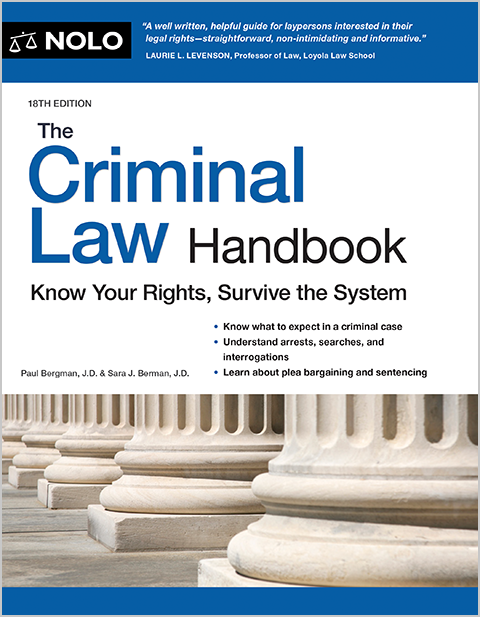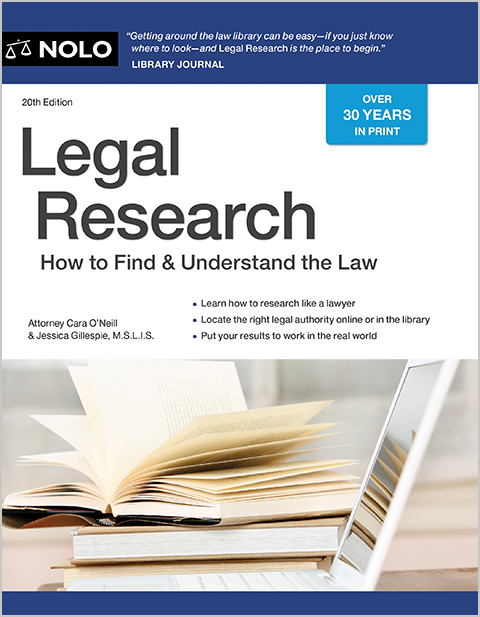 Bailing Out of Jail
Bailing Out of Jail
Learn how bail is set, how to get it lowered, when to use a bond, what happens if you jump.
Bail is cash, a bond, or property that an arrested person gives to a court to ensure that they will appear in court when ordered to do so.
Not everyone can post the full amount of bail in cash. Other forms of bail may require less money upfront but come with other costs, such as nonrefundable premiums and collateral requirements.
A defendant might pay a higher bail amount to get released quickly. Or a defendant can wait and see if a judge will set a lower bail or bond amount.
Excessive bail violates the Eighth Amendment. Learn how courts review bail amounts and determine when an amount is too much and unconstitutional.
A defendant with strong ties to the community isn't likely to flee, which may warrant a lower bail or bail reduction.
Forfeiting bail isn't necessarily all an absent defendant will have to deal with. Learn the consequences of failing to show up at court after bailing out.
People who have been accused of crime have a general right to bail pending trial.
If a defendant fails to show up, the bail bond agent has a couple of options to avoid having to ante up the entire bail amount. One option is to use a bounty hunter.
Some U.S. jurisdictions are using advanced formulas to evaluate the risks that defendants pose. Judges weigh these evaluations when considering pretrial release.
Learn what happens at a bail hearing, what evidence is considered, and when a defendant can ask for a bail review.
In most situations, staying in jail pending trial is not a good idea.
Learn how you could end up with a bench warrant and what to do about it.
A pretrial detention hearing in federal court is much like a bail hearing in state court.
Empower Yourself: DIY Products by Nolo
Sidestep the lawyers with do-it-yourself books, documents, and software.
Book
Legal Research
Nolo offers hundreds of consumer-friendly, do-it-yourself legal products for all types of legal situations. Browse our full product list.
More Legal Issues
Click below to view more legal issues. Our extensive collection of legal topics ranges across different areas of practice.
Corporations Car Accidents Criminal Law Debt Management Disability Law Divorce & Family Law

Learn About Our Team
Our editors have over 100 years of combined experience practicing law. These professionals have worked in a wide range of legal areas, from estate planning to criminal law to business formation and beyond. They’re experts at explaining complicated legal issues in easy-to-understand terms.
Learn more about the team that manages Nolo’s articles, books, and DIY tools.
Need a Lawyer? We Can Help
Find an experienced, local attorney in three easy steps. Our process is designed for ease and simplicity.
Describe Your Case
Briefly tell us about your case, and provide your contact information.
Get Connected
We find and instantly list attorneys that can best handle your case.
Hire an Attorney
Choose the attorneys you would like to work with.
Nolo Legal Dictionary
Find plain-English definitions for legal terms by browsing Nolo's Law Dictionary.
Are You an Attorney?
Grow your firm with Martindale-Nolo, the largest legal network, and learn more about our attorney lead-generation and marketing services.
Integrity and Expertise You Can Rely On
At Nolo, we prioritize quality and transparency because we know how important reliable legal information is to our readers. Our information is meticulously researched, regularly updated, and written in plain English by our experienced writers and editors. Learn more about our editorial standards.


